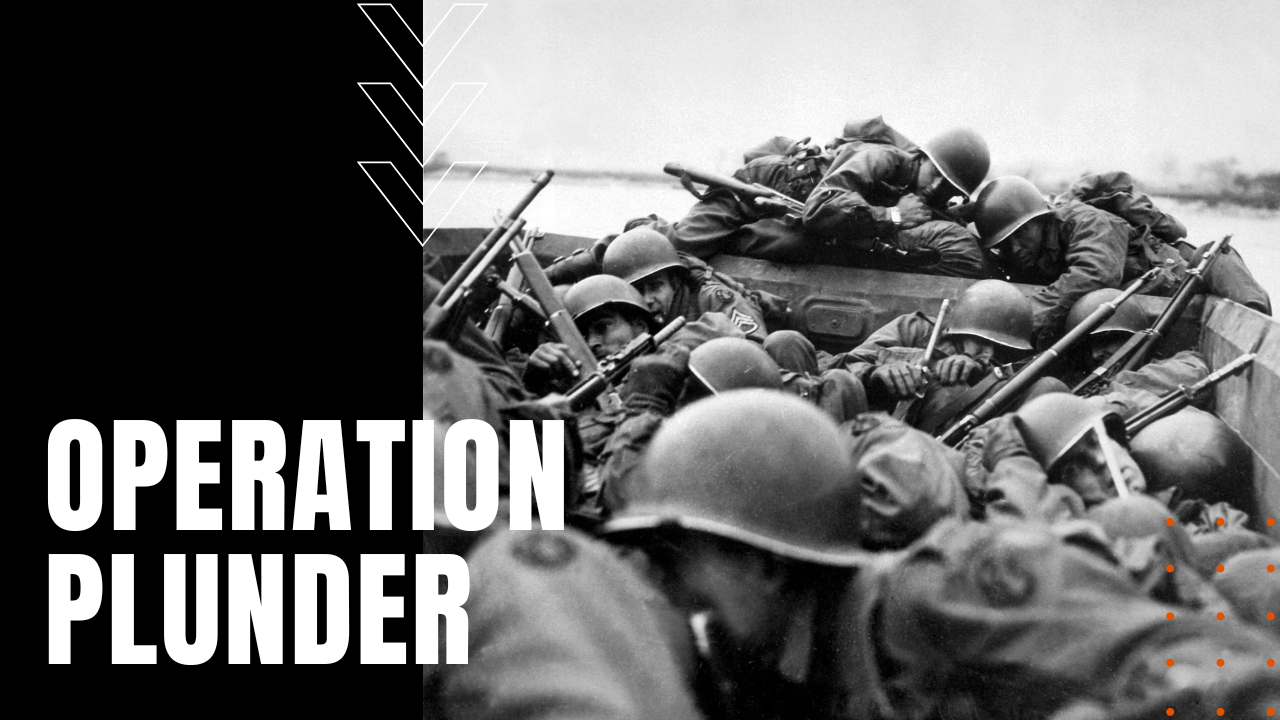Operation Plunder

After the Allies’ successful D-Day landings at Normandy, Allied commanders now set their sights on the Rhine River and the invasion of the German motherland, with the ultimate goal of bringing down the Nazi high command at their capital city Berlin. Beginning in late February, General Patton’s 3rd Army battled their way through the Lower Moselle Valley north of Trier, collapsing German resistance as they pushed onward toward the Rhine.
Taking Cologne
On March the 5th, 1st Army troops reached the northern and southern outskirts of Cologne—Germany’s fourth largest city—while men of the 3rd Armored Division methodically eliminated pockets of resistance in 15 suburban towns ringing the city. On March 22nd, 1945, the 5th Infantry Division was first to cross the Rhine at Oppenheim Germany, just south of Mainz, catching German troops completely by surprise due to the Allies’ lack of advanced artillery bombardment, making the event the first breach of the Rhine since Napoleon’s crossing in 1805.
Plunder Begins
A day later, led by British Field Marshal Bernard Montgomery and his 21st Army Group, Allied troops initiated Operation Plunder at the German cities of Rees and Wesel, supported by Lt. Gen. Miles Dempsey’s British Second Army and Lt. Gen. William H. Simpson’s U.S. Ninth. 4,000 Allied guns lay down a four-hour punishing assault on German positions east of the Rhine, while after nightfall, the 17th Armored Engineer Battalion built floating treadways across the Rhine roughly three miles south of Wesel. After the artillery barrage ended, thousands of aircraft of the First Allied Airborne Army inserted some 16,000 paratroopers east of the Rhine on March 24th, proving to be the largest single-day, single-location airborne operation ever conducted.
Lessons Learned
Fortified by hard lessons learned during Operation Market Garden, by the end of the day, airborne troops and Allied divisions had linked up with the 15th Scottish Army, and while the last fierce German resistance was broken on March 25th after an eighteen-day offensive at the Battle of Remagen, by March 27th, an Allied bridgehead had been achieved east of the Rhine, some 35 miles wide and 20 miles deep, making Operation Plunder, one of the last major roadblocks during the Allies’ determined push for Berlin.
